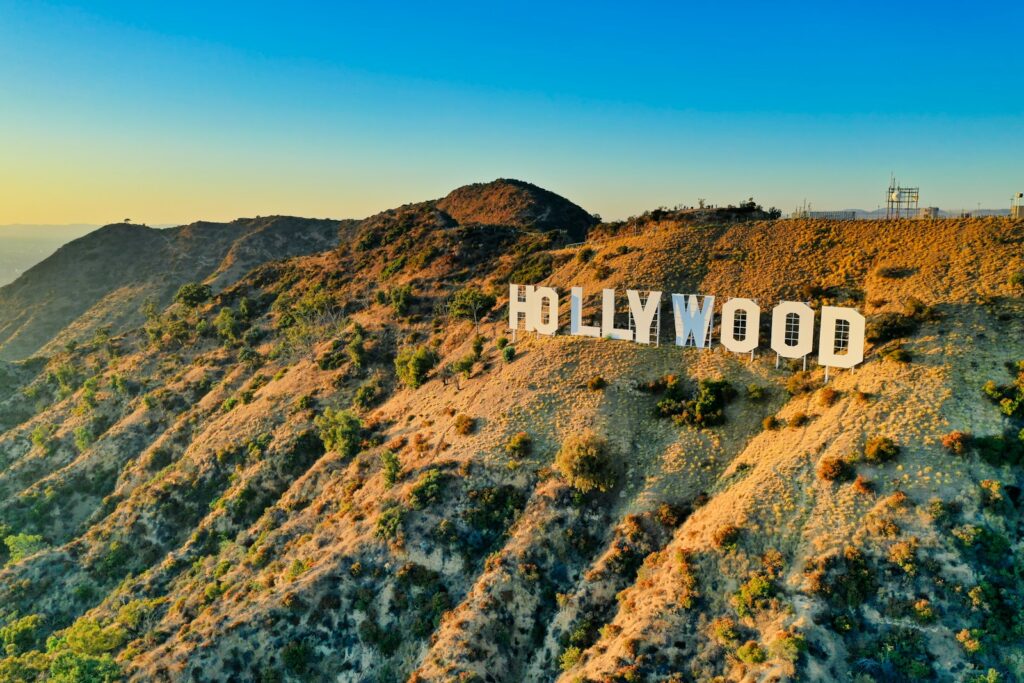
The Golden Age of Hollywood, stretching from the advent of sound in the late 1920s to the dawn of New Hollywood in the mid-1960s, stands as an unparalleled epoch in cinematic history. This pivotal period was a crucible for creativity, where storytelling flourished despite technological limitations and the stringent constraints of the studio system and the Hays Code. It was within this vibrant, often challenging environment that a distinct group of creative forces, many of them European émigrés or quintessential American talents, laid the groundwork for the modern movie industry.
These directors were not merely filmmakers; they were architects of dreams, weaving narratives that captivated a global audience and establishing stylistic benchmarks that continue to inspire generations. Their innovations, from revolutionary camera work to nuanced character development, transformed the very language of cinema. We often relate to Hollywood more than any other global cinema industry, appreciating the subtleties of European films or the genteelness of Japanese movies, but a steady supply of Hollywood classics remains essential to our cultural diet.
In an industry that has produced movies for over a century, identifying the most influential figures is an arduous but necessary task. As we reflect on this “unforgettable chapter” and the profound impact of those who shaped it, we embark on a journey to explore the careers of some of the greatest directors to have graced Hollywood’s Golden Age. These individuals, through their particular talents, helped make this era the most iconic period of American film, leaving an indelible mark not only within their industry but also upon our collective cultural consciousness.
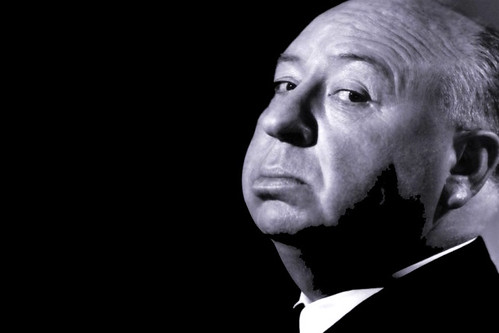
1. **Alfred Hitchcock**Alfred Joseph Hitchcock, born to a traditional English couple with a strict Catholic upbringing, began his cinematic journey at 20 as a title card designer for a British branch of Famous Players-Lasky. His first full-scale directorial attempt came with 1925’s ‘The Pleasure Garden’, but it was ‘The Lodger’ two years later that truly introduced many elements that would become his indelible trademarks, such as the innocent main character falsely accused of a crime, and his now-famous cameo appearances.
Hitchcock’s move to Hollywood was spearheaded by American producer David O. Selznick, who tapped him to direct the 1940 adaptation of the novel ‘Rebecca’. This film not only won Best Picture at the Oscars but also earned Hitchcock his first nomination for directing. Though he would receive four other nominations for Best Director for films like ‘Lifeboat’, ‘Spellbound’, ‘Rear Window’, and ‘Psycho’, and was behind countless other classics such as ‘The Birds’ and ‘Vertigo’, he astonishingly never won a competitive Academy Award in this category.
Nonetheless, no golden statue could ever overshadow the title he earned: “The Master of Suspense.” His innovative use of camera angles and suspenseful storytelling techniques had an enduring impact on future generations of filmmakers. Films like ‘Notorious’ and ‘Shadow of a Doubt’ solidified his reputation as a master of mid-century thrillers, constantly pushing the boundaries of tension and audience engagement. His constant innovation, such as maintaining tension in ‘Rear Window’ with a single-room setting or simulating one continuous take in ‘Rope’, demonstrated his exceptional skill at engaging and surprising his audience.
Hitchcock reached a new level of fame and influence with ‘Psycho’ in 1960, a film that redefined the thriller genre and cemented his legacy. The innovative techniques he employed, from the famous shower scene to his psychological depth, continue to inspire creativity in filmmaking even today, ensuring his status as one of the greatest filmmakers ever whose work continues to resonate with movie enthusiasts worldwide.
Read more about: The 15 Scariest Classic Horror Films of All Time
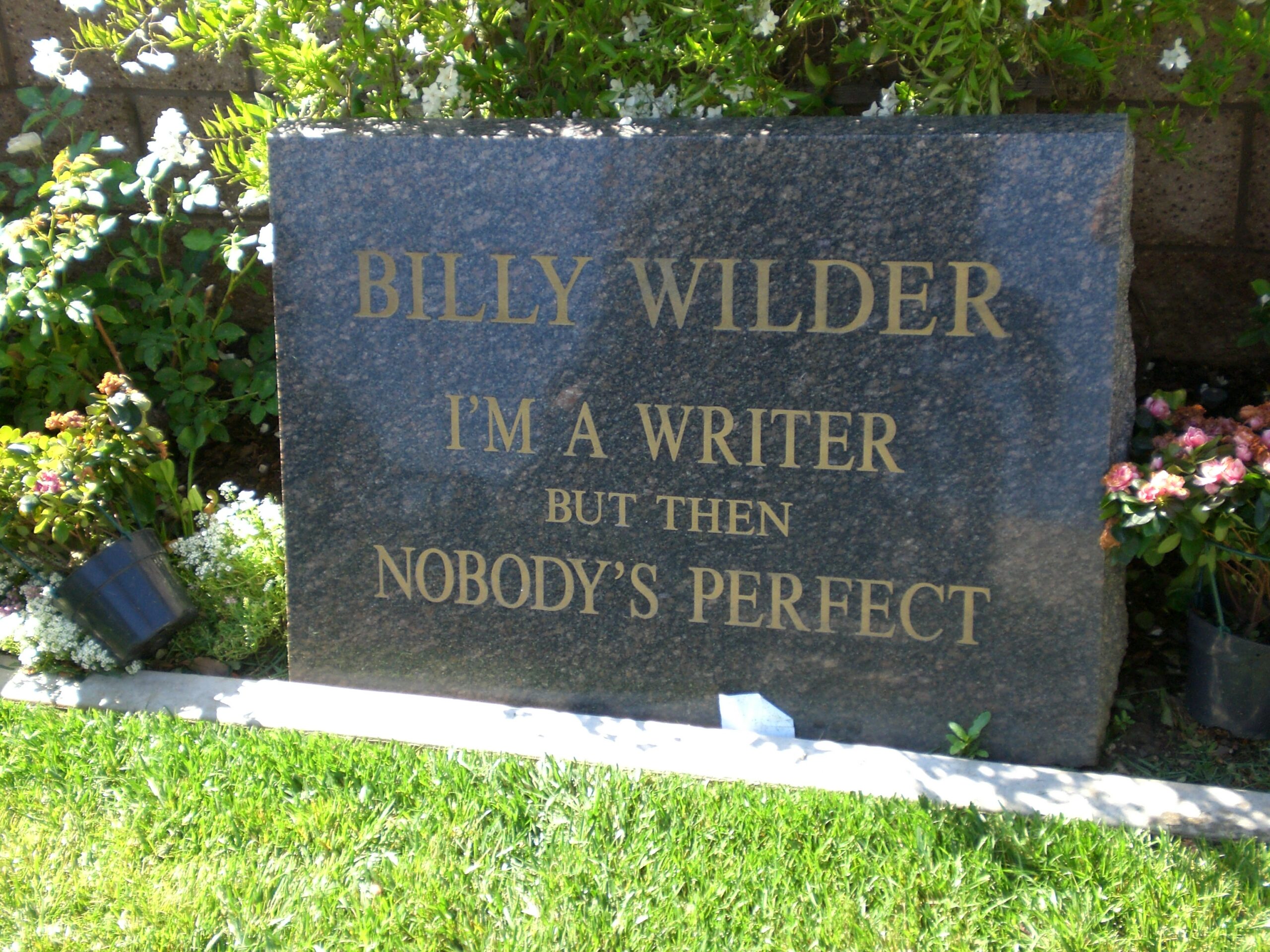
2. **Billy Wilder**An undisputed cinematic genius, Billy Wilder’s journey to Hollywood began far from its sun-drenched studios, born on June 22, 1906, in the now-extinct Austria-Hungary. There, he traded a promising legal career for the dynamic world of journalism, swiftly transitioning to the entertainment industry by writing scripts for UFA in Germany. However, Hitler’s rise to power, and Wilder’s Jewish heritage, compelled him to flee the country, first to Paris where he directed his initial feature, before setting his sights on Hollywood, a move from which he never looked back.
His early years in the USA were marked by a highly successful screenwriting partnership with Charles Brackett, a collaboration that yielded classics such as ‘Ninotchka’ and ‘Ball of Fire’. This period honed his sharp wit and narrative precision, skills he would soon bring to his directorial work. His first American film as a director was the delightful romantic-comedy ‘The Major and the Minor’ in 1942, a precursor to the diverse masterpieces he would helm.
Wilder quickly demonstrated a remarkable versatility, effortlessly navigating between genres. Following his comedic debut, he tackled the war thriller ‘Five Graves to Cairo’ and then delivered the all-time Film Noir classic, ‘Double Indemnity’. This rapid succession of successful and critically acclaimed films showcased his ability to craft compelling stories across disparate cinematic landscapes, establishing him as a formidable force in the industry.
In his long and irreproachable career, Wilder would go on to turn out such diverse masterpieces as ‘The Lost Weekend’, which explored the harrowing effects of alcoholism, the cynical Hollywood classic ‘Sunset Blvd’, and the uproariously funny ‘Some Like it Hot’. These films, among many others, have cemented his place as one of the most celebrated names in filmmaking history, admired for his meticulous precision, intelligent storytelling, and an ability to infuse both art and commerce into his ventures, making him a truly unique and influential auteur.
Read more about: Robin Williams’ Final Act: Unmasking the Invisible Monster of Lewy Body Dementia and a Widow’s Enduring Love
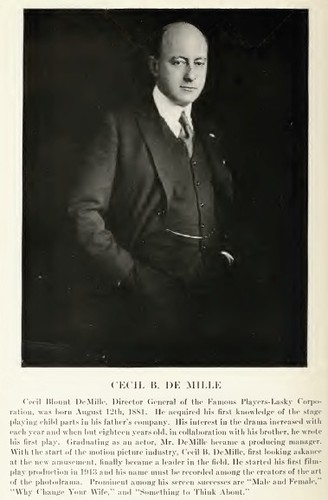
3. **Cecil B. DeMille**Cecil B. DeMille stands as a true pioneer of the American Movie Industry, renowned for his high-value epic productions and his unparalleled showmanship. In a foundational move in 1913, alongside Jesse Lasky and Samuel Goldwyn, he co-created the Lasky Film Company, an entity that would eventually evolve into the cinematic titan known as Paramount Pictures. His vision for spectacle and grand narratives profoundly shaped early Hollywood, making him an invaluable figure in its development.
DeMille’s name is synonymous with the biblical epic, a genre he virtually defined. His first foray into these grand tales was the silent ‘The Ten Commandments’ in 1923, a film that garnered both critical acclaim and significant profitability, mirroring the success of its more widely known 1956 remake. This demonstrated his early mastery of scale and audience engagement, setting a precedent for his future endeavors.
Throughout the 1930s and 1940s, DeMille elevated his showmanship to new heights with a string of impressive films, including ‘Cleopatra’ (1934) and ‘Samson and Delilah’ (1949). His crowning achievement in this era arrived with the circus-themed spectacle ‘The Greatest Show on Earth’, which captivated audiences and won the Academy Award for Best Picture of 1952. His influence extended beyond the screen, as evidenced by his memorable appearance playing himself in Billy Wilder’s ‘Sunset Blvd’, where he is credited with discovering Norma Desmond’s talent, mirroring his real-life role in shaping leading-lady Gloria Swanson’s career.
DeMille’s talents, however, were not confined solely to monumental epics; he also demonstrated a capacity for lighter fare. While primarily celebrated for his large-scale productions, his ability to handle diverse storytelling styles while retaining a distinctive cinematic grandeur was remarkable. His filmography, rich with timeless classics, solidifies his legacy as a visionary director whose work continues to influence the scope and ambition of cinema, particularly in bringing large-scale stories to life.
Read more about: Honestly, What Happened To Them? 15 Iconic Special Effects From Old Films That We Forgot Still Astound Us.
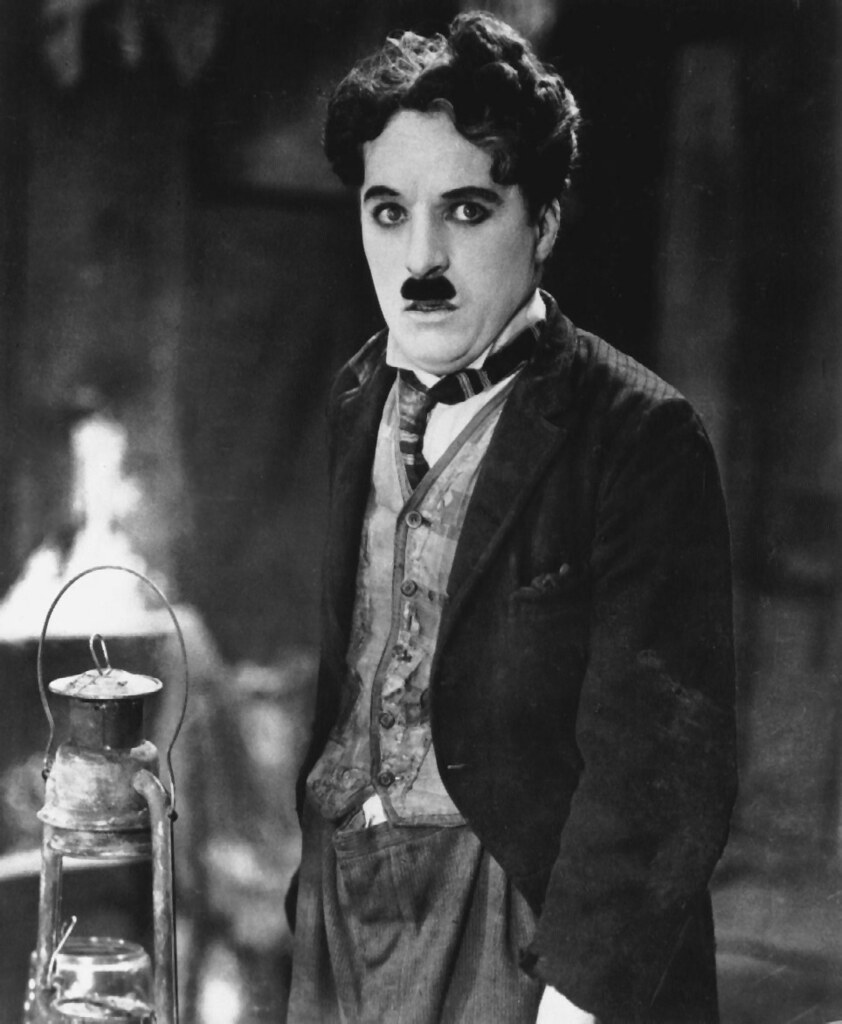
4. **Charlie Chaplin**Charlie Chaplin, one of the most recognizable faces of 20th-century entertainment, was arguably the first film celebrity to achieve incontestable world fame. Born into poverty in London, his early life was spent performing in vaudeville, honing the comedic timing and physical prowess that would define his career. His journey to stardom took a significant turn in 1910 when he joined a troupe for an American tour, leading to the birth of his iconic character, The Little Tramp, four years later under Mack Sennett’s direction.
Chaplin was not just an actor; he was a creative force determined to control his artistic output. In a groundbreaking move in 1919, he joined forces with D.W. Griffith, Mary Pickford, and Douglas Fairbanks to establish United Artists, a distribution company that afforded them unprecedented control over their own productions. This independent spirit was further showcased with the release of his first feature film, ‘The Kid’, in 1921, which blended comedy with poignant social commentary.
By the 1930s, as sound irrevocably transformed motion pictures, Chaplin famously resisted the new technology, choosing instead to deliver two more silent masterpieces: ‘City Lights’ and ‘Modern Times’. These films proved that the power of visual storytelling and universal human emotion could transcend the need for dialogue. When he finally embraced sound in 1940’s ‘The Great Dictator’, a powerful Nazi-fascism satire, Chaplin had a profound message to convey about the state of the world, demonstrating his willingness to use his platform for social critique.
Despite a personal life marked by scandal, including a paternity suit and accusations of communism, Chaplin’s reputation as a film icon has only deservedly grown with time. His genius extended to every facet of filmmaking: he directed, wrote, acted, and even composed the scores for many of his pictures. A true polymath of the craft, Chaplin achieved immortality not just through his groundbreaking work, but through the timeless, optimistic outlook embedded within his cinematic universe, leaving an enduring legacy of hope and humanity.
Read more about: Timeless Triumphs: 10 Golden Age Films That Demand Your Undivided Attention Forever
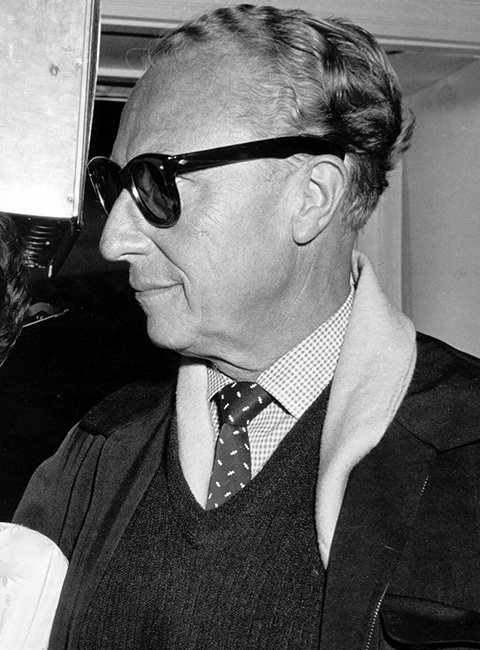
5. **Douglas Sirk**Douglas Sirk, a leading director of the German stage during the 1930s, found himself compelled to leave his native land due to his outspoken anti-Nazi politics and the fact that his wife was Jewish. His arrival in Hollywood in 1941 placed him among a growing contingent of European film professionals seeking refuge in the United States from the encroaching war. This background deeply informed his later cinematic explorations of societal pressures and hidden turmoil.
Sirk’s most enduring and widely remembered work flourished at Universal Studios throughout the 1950s, a period during which he frequently collaborated with screen legend Rock Hudson. These films were predominantly glossy melodramas, meticulously crafted and often shot in glorious Technicolor, which served to heighten their emotional impact and visual splendor. They delved beneath the surface of contemporary American life, exposing its underlying prejudices and social restraints with a sophisticated, often critical, eye.
His filmography from this era boasts a remarkable series of hits, including ‘All That Heaven Allows’, ‘Magnificent Obsession’, ‘Written on the Wind’, and what is widely considered his masterpiece, ‘Imitation of Life’. While these films were immensely popular with the public, they initially struggled to impress critics, who often dismissed them as mere ‘women’s pictures’ or sentimental fare. This initial critical reception, however, would not define his lasting legacy.
Sirk’s reputation as a director steadily grew over time, primarily thanks to the French auteur theory of the 1960s. This movement re-evaluated his work, recognizing in his sophisticated style a profound “underlying irony and social commentary” that had previously been overlooked. This re-appraisal cemented his status as a master of melodrama, whose incisive critiques of society, delivered through a visually rich and emotionally resonant aesthetic, continue to influence filmmakers and scholars, proving the enduring power of his artistic vision.
Read more about: 15 Tear-Jerking Movies: Get Your Tissues Ready for an Emotional Rollercoaster
6. **Elia Kazan**Elia Kazan was a transformative figure in American cinema, perhaps most significantly as a co-founder of the Actors Studio. Through this pioneering institution, Kazan introduced and popularized ‘the Method’ in movies, a revolutionary approach to acting that fundamentally changed performance on screen. His keen eye for talent led to the discovery and nurturing of a whole generation of iconic performers, including Warren Beatty, Eva Marie Saint, James Dean, and Marlon Brando, forever altering the landscape of cinematic acting.
Kazan’s films frequently served as a powerful platform for addressing pressing social concerns, reflecting a profound engagement with the complexities of the American experience. A prime example is the 1947 Best Picture winner, ‘Gentlemen’s Agreement’, which courageously confronted anti-Semitism. Similarly, his 1949 film ‘Pinky’ tackled racial prejudice, demonstrating his commitment to using cinema as a tool for social commentary and challenging societal norms.
Arguably, his most acclaimed and influential work emerged in the 1950s. This decade saw the release of cinematic milestones such as ‘A Streetcar Named Desire’, a powerful adaptation of a play he had already directed on stage, and ‘On the Waterfront’, a gritty exploration of union corruption that earned an impressive eight Academy Awards. Additionally, ‘East of Eden’ marked the first starring role for the legendary James Dean, solidifying Kazan’s reputation for eliciting intensely raw and memorable performances from his actors.
Kazan’s career, however, is also marked by a notorious episode: his decision to act as a friendly witness before the House Committee on Un-American Activities in 1952, a choice he steadfastly never regretted. This decision sparked significant controversy throughout his life, yet his artistic contributions remained undeniable. In 1999, he was awarded an honorary Oscar, an event that famously drew both protests and applause, highlighting the complex and enduring legacy of his impact and personal choices, as encapsulated by actor Gregory Peck’s sentiment: “a man’s work should be separate from his life.”
Read more about: Unpacking the Method: The Extreme Techniques and Divisive Practices of Method Acting That Sparked On-Set Drama
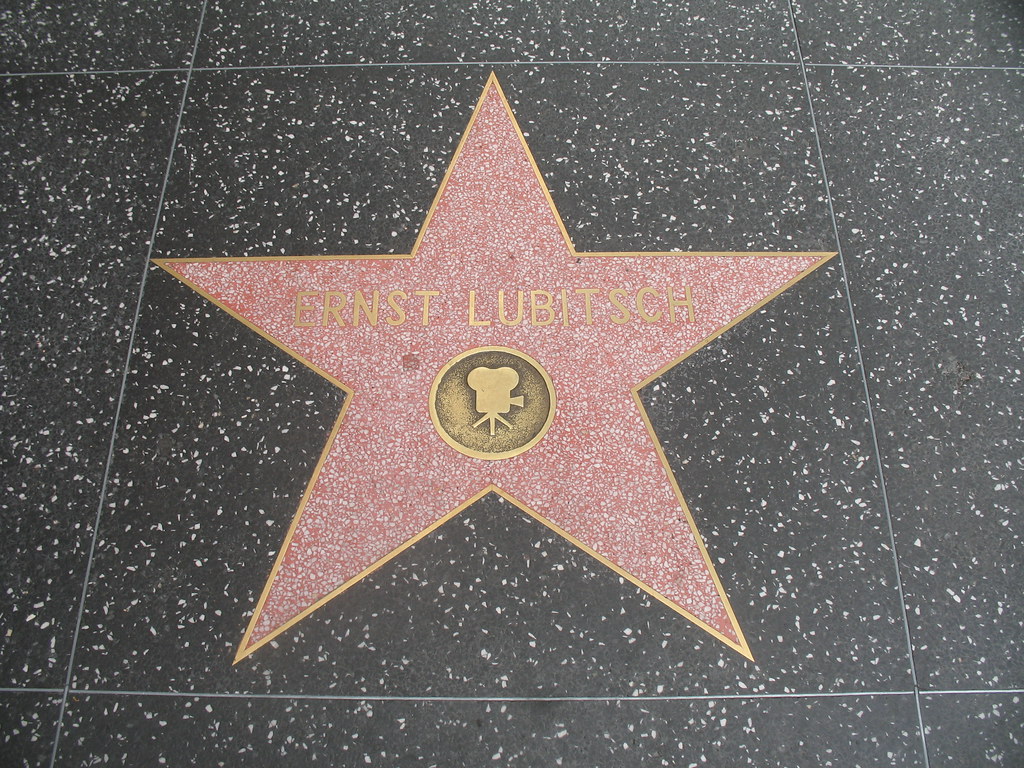
7. **Ernst Lubitsch**Ernst Lubitsch, a German émigré director, carved out a unique and enduring legacy in Hollywood, his sophisticated style becoming so distinctive that it earned its own moniker: “The Lubitsch Touch.” This signature was characterized by an elegant filmmaking approach, sharp, witty dialogue, and a subtle mastery of ual innuendo that charmed audiences and critics alike. His ability to convey complex emotions and narratives with a light, deft hand set him apart in an era often dominated by grander statements.
Lubitsch’s distinguished American career began in 1922 when the era’s darling, Mary Pickford, personally selected him to direct her newest film. While he initiated his legendary string of comedies of manners in the silent era, it was truly during the early sound age and the pre-Code days that Lubitsch produced his most acclaimed and influential movies. He masterfully transitioned to sound, proving his versatility and innovative spirit in a rapidly changing industry.
A true pioneer of musical comedy, Lubitsch was instrumental in discovering singer-actress Jeanette MacDonald, casting her as the star of three of his early cinematic gems: ‘The Love Parade’, ‘One Hour with You’, and ‘Monte Carlo’. Among these, ‘The Smiling Lieutenant’ from 1931 is widely considered his finest effort in the genre, showcasing his unique blend of music, romance, and sophisticated humor. He also frequently collaborated with talents like Claudette Colbert, Maurice Chevalier, and Miriam Hopkins, with Hopkins becoming one of his favorite actresses.
Miriam Hopkins would go on to star in two of Lubitsch’s most enduring and best-remembered works, including the daring love-triangle comedy ‘Design for Living’ and what many argue is his undisputed masterpiece, ‘Trouble in Paradise’. In the later stages of his illustrious career, Lubitsch continued to deliver treasured classics such as the iconic ‘Ninotchka’ and the poignant war satire ‘To Be or Not to Be’. Tragically, his prolific career was cut short when he collapsed from a heart attack in 1947, leaving behind a body of work that continues to define sophisticated cinematic comedy.
Read more about: Timeless Triumphs: 10 Golden Age Films That Demand Your Undivided Attention Forever
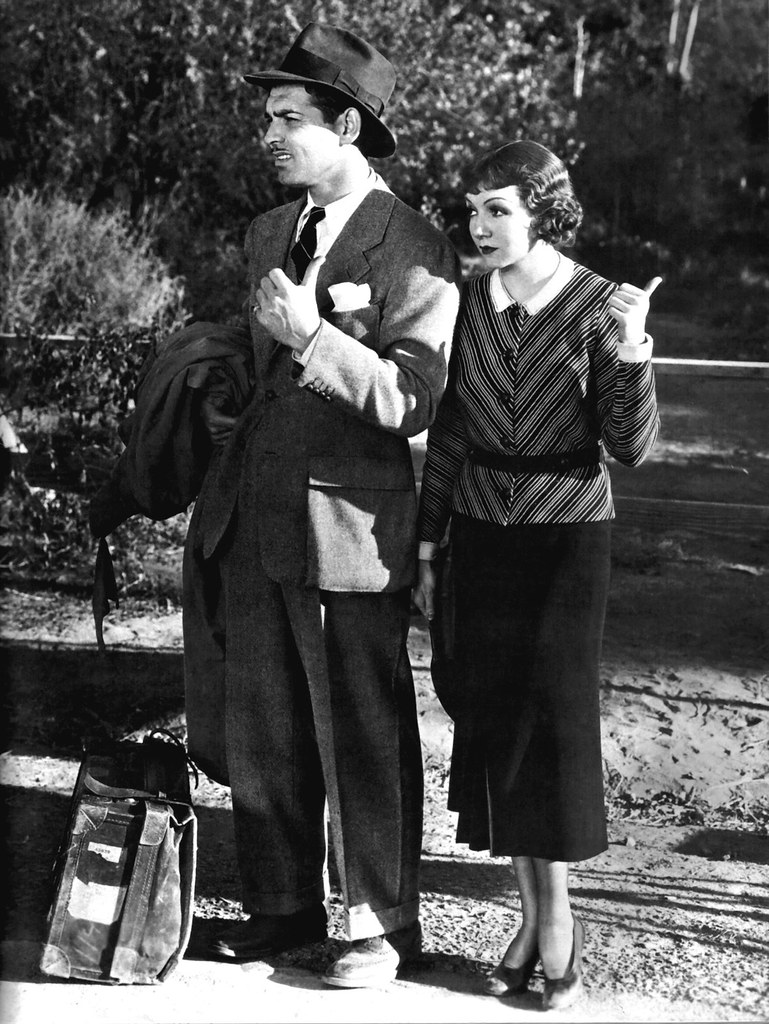
8. **Frank Capra**Francesco Rosario Capra’s journey began in Sicily in 1897, where as a young boy, he celebrated his sixth birthday on a ship bound for the United States. Like countless immigrant families, the Capras endured a long and arduous journey, fueled by the aspiration of embracing the American way of life. This profound personal experience would indelibly shape his directorial vision, leading him to become the filmmaker who, perhaps more than any other, authentically portrayed American values on screen.
Indeed, his connection to the national psyche was so strong that director John Cassavetes famously quipped, “Maybe there really wasn’t an America, maybe it was only Frank Capra.” Capra forged his formidable reputation at Columbia Pictures during the tumultuous era of the Great Depression. Studio boss Harry Cohn, recognizing Capra’s immense talent, afforded him a rare degree of creative freedom. In return, Capra delivered a string of monumental hits that single-handedly elevated the studio from the infamous “poverty row” into a major industry player.
Over a remarkable career spanning more than 40 years in movies, Capra directed over 50 films and earned an impressive three Academy Awards for Best Director. His filmography is replete with timeless classics that continue to resonate, including ‘It Happened One Night’, ‘Lost Horizon’, ‘You Can’t Take it with You’, ‘Mr. Deeds Goes to Town’, and ‘Mr. Smith Goes to Washington’. These films consistently blended humor, romance, and poignant social commentary, earning them a permanent place in cinematic history.
While his body of work is rich with masterpieces, Capra is undoubtedly best remembered today for what has become the quintessential Christmas film, 1946’s ‘It’s a Wonderful Life’. This beloved movie, starring James Stewart, encapsulates his signature blend of optimism, human struggle, and the enduring power of community. His three Best Director Oscars for ‘It Happened One Night’, ‘Mr. Deeds Goes to Town’, and ‘You Can’t Take It With You’ further underscore his profound ability to craft narratives that uplift and inspire, cementing his legacy as a master storyteller.
Read more about: Timeless Triumphs: 10 Golden Age Films That Demand Your Undivided Attention Forever

9. **Fritz Lang**Born in Austria, Fritz Lang swiftly became synonymous with the archetypal German director, right down to the monocle he famously sported. It was within Germany’s legendary UFA studio, amidst the burgeoning Expressionism movement, that Lang crafted some of his most celebrated and groundbreaking films. Among these was the revolutionary science-fiction drama ‘Metropolis’, a cinematic landmark that remains influential to this day for its visionary scope and artistic innovation, setting a new bar for what cinema could achieve.
The tumultuous political climate of 1930s Germany dramatically altered Lang’s trajectory. In 1934, Joseph Goebbels, Hitler’s propaganda minister, extended an offer to Lang for a leading position as the head of the Nazi regime’s film industry. According to Lang himself, this chilling proposition prompted his immediate flight from Germany on the very same evening, forcing him to abandon most of his personal belongings and even his wife and frequent film collaborator, Thea von Harbou, who was a Nazi-sympathizer.
Lang relocated to Hollywood in 1936, where he continued to brilliantly integrate popular film genres with his sophisticated visual style, effortlessly bringing his distinctive European sensibility to American cinema. The expressionistic traits evident in movies such as ‘The Big Heat’, ‘Man Hunt’, and ‘Scarlet Street’, to name just a few, significantly contributed to the burgeoning development of the American Film Noir movement. These films cemented Lang’s reputation as one of the greatest émigrés to leave an indelible mark on Hollywood.
While many critics during his active years felt that his American phase perhaps fell short of the unparalleled grandeur of his early German works, a re-evaluation by French filmmakers and writers from the influential Cahiers du Cinéma in later decades unequivocally declared his Hollywood output to be “that of an expert.” This posthumous recognition underscored his mastery and the lasting impact of his intricate, psychologically charged narratives and chiaroscuro aesthetics on subsequent generations of filmmakers.
Read more about: The Enduring Legacy and Multifaceted Identity of the Name Peggy: An In-Depth Lexicon

10. **George Cukor**George Cukor, born to Hungarian immigrant parents in Manhattan, began his distinguished career as a director on Broadway. His discerning literary adaptations quickly garnered critical acclaim, catching the attention of Hollywood executives. In 1929, he was specifically chosen to be part of a new generation of directors tasked with navigating and mastering the then-novel technology of sound in motion pictures, a challenge he would embrace with remarkable success.
Cukor steadily ascended in the film world at RKO, particularly under the watchful eye and influential reign of producer David O. Selznick. During this formative period, he directed ‘What Price Hollywood?’, a prescient look at the industry itself, and importantly, three of his ten collaborations with the legendary actress Katharine Hepburn: ‘A Bill of Divorcement’, which earned Hepburn her very first Academy Award, ‘Little Women’, and ‘Sylvia Scarlett’. These collaborations forged a reputation for Cukor as a director capable of drawing out nuanced performances from his leading ladies.
Following his move to the prestigious MGM studio, Cukor continued to showcase his versatile talent. He helmed the enduring comedy classic ‘Dinner at Eight’ and successfully adapted ‘Camille’ for the screen, before embarking on the ambitious all-women cast production, ‘The Women’. At Metro, he also directed some of Hepburn’s greatest and most iconic vehicles, including the sparkling comedies ‘The Philadelphia Story’ and ‘Adam’s Rib’, further solidifying their celebrated partnership and his reputation for directing actresses.
By the mid-1930s, Cukor had already earned the moniker of “a master of the so-called ‘woman’s pictures’ subgenre.” His unparalleled ability to elicit powerful performances from female stars led him to direct over 10 actresses to Oscar-nominated performances throughout his remarkable 50-year career in Hollywood, a testament to his exceptional skill in guiding talent. This impressive list includes Judy Garland’s unforgettable turn in ‘A Star is Born’, cementing Cukor’s legacy as a director with a profound understanding of character and performance.
Read more about: Mitzi Gaynor, Effervescent Star of Hollywood Musicals and Stage, Dies at 93, Reflecting on a Dazzling Legacy
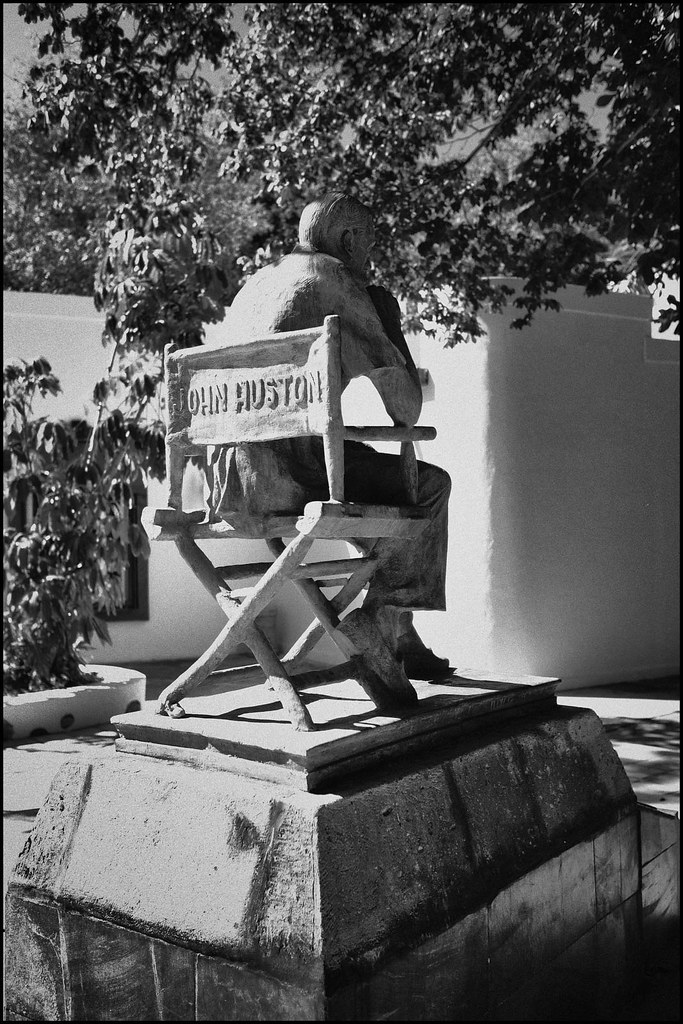
11. **John Huston**John Huston, a towering figure in American cinema, boasted an extensive career that saw him direct an astonishing 18 Oscar-nominated films between 1941 and 1987, a clear testament to his immense talent and enduring appeal across multiple decades. Often considered one of the founding fathers of modern Hollywood, Huston was a true polymath—a screenwriter and actor par excellence who never shied away from experimentation, even during a time when the American movie industry faced continuous restrictions.
Huston gained major critical acclaim and widespread recognition with his 1941 masterpiece, ‘The Maltese Falcon’. This landmark film not only effectively defined the nascent film noir genre but also featured Humphrey Bogart’s iconic performance, establishing a blueprint for detective thrillers for generations to come. Huston’s intelligent portrayal of human frailties and the dark realities of society infused his narratives with a depth and sophistication that ensured none of his movies were ever boring.
Beyond his indelible mark on film noir, Huston demonstrated a remarkable versatility, effortlessly venturing into other genres with equal success. His Western-inspired classic, ‘The Treasure of the Sierra Madre’, remains a critical favorite, lauded with a perfect Rotten Tomatoes rating for its gritty realism and powerful storytelling. This film further showcased his ability to craft compelling narratives that explored moral ambiguities and the darker side of human nature, earning him profound respect and admiration within the industry.
Another significant collaboration for Huston was ‘The African Queen’, a beloved 1950s film that reunited him with Humphrey Bogart. This adventure-drama seamlessly blended thrilling action with compelling character development, proving Huston’s genius in balancing genre conventions with rich, nuanced performances. His diverse collection of works solidifies his status as a visionary director whose influence resonates through cinematic history, appreciated for his unwavering commitment to artistic integrity and groundbreaking storytelling.
Read more about: Unveiling the Tragic End of Oliver Reed: The Drinking Contest That Silenced the Gladiator Star
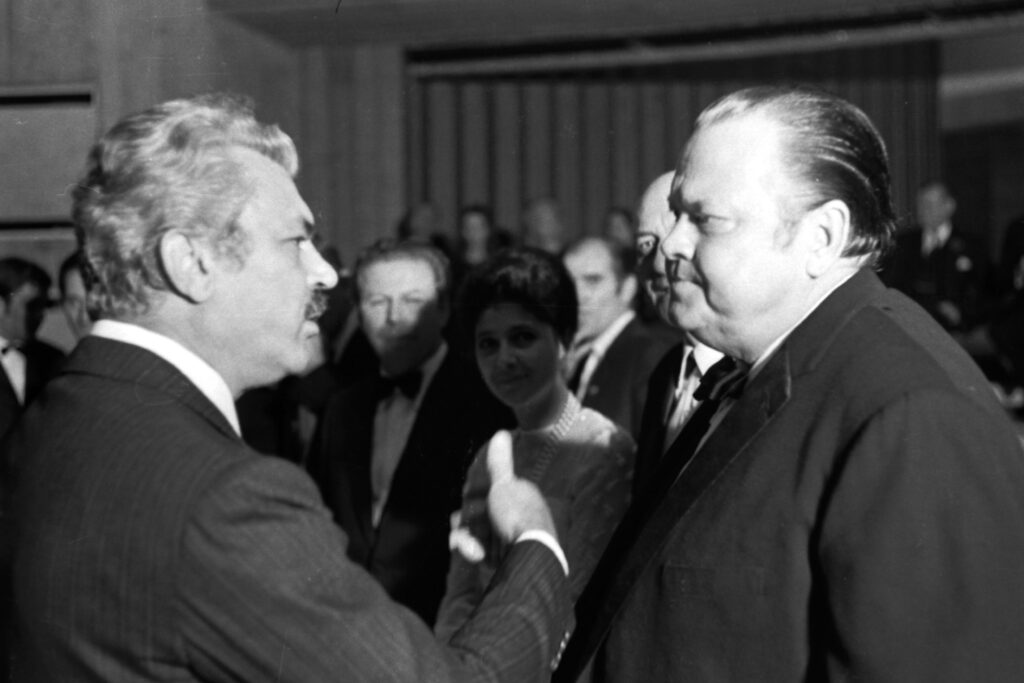
12. **Orson Welles**Despite having fewer directing credits than some of his contemporaries like Hitchcock or Wyler, Orson Welles’ impact on the film industry is undeniably monumental and transformative. A true American with an unparalleled refinement of style, Welles arrived in Hollywood with a reputation for boundary-pushing theatrical and radio work, a background that would fuel his revolutionary approach to cinema. His audacity and innovative spirit were immediately evident in his groundbreaking debut feature.
His 1941 film, ‘Citizen Kane’, is not merely a movie; it is frequently cited as the greatest movie ever made, a cinematic touchstone that forever altered the landscape of filmmaking. Welles revolutionized narrative structure with its non-linear storytelling, pushed the boundaries of lighting with deep focus cinematography, and introduced unprecedented camera work, including low-angle shots and ceilinged sets. This film established new artistic standards that continue to inspire generations of filmmakers globally.
Welles’ visionary approach to directing was characterized by an unparalleled creative control and a willingness to challenge conventional cinematic norms. He was not just a director but also a writer, producer, and actor, imbuing his projects with a singular artistic voice that was both ambitious and deeply personal. His innovative techniques were not merely stylistic flourishes; they served to enhance his profound storytelling and character development, setting a new benchmark for cinematic artistry.
His indelible mark extended to the film noir genre as well, with ‘The Touch of Evil’ being considered a masterpiece that further cemented Welles’ innovative style. This gritty, atmospheric thriller, renowned for its audacious opening tracking shot, is a testament to his ability to infuse genre films with profound psychological depth and visual sophistication. Welles’ work, though sometimes controversial and often ahead of its time, left an enduring legacy that continues to influence modern filmmaking techniques and cultural narratives, making him one of Hollywood’s most important and iconoclastic auteurs.
Read more about: Timeless Triumphs: 10 Golden Age Films That Demand Your Undivided Attention Forever
As we look back at the Golden Age of Hollywood, it becomes clear that the departure of these iconic directors at the remarkable age of 85 truly marks the closing of an unforgettable chapter. Their collective genius, spanning diverse genres and pioneering innovative techniques, not only shaped the foundational language of cinema but also profoundly influenced popular culture and artistic expression for decades to come. These masters navigated a challenging industry with an unwavering commitment to storytelling, leaving behind a cinematic treasury that continues to inspire, entertain, and educate new generations of filmmakers and audiences worldwide. Their films are more than just entertainment; they are enduring testaments to the power of vision, collaboration, and the timeless magic of the silver screen, ensuring that the Golden Age’s golden touch will shine on indefinitely.




